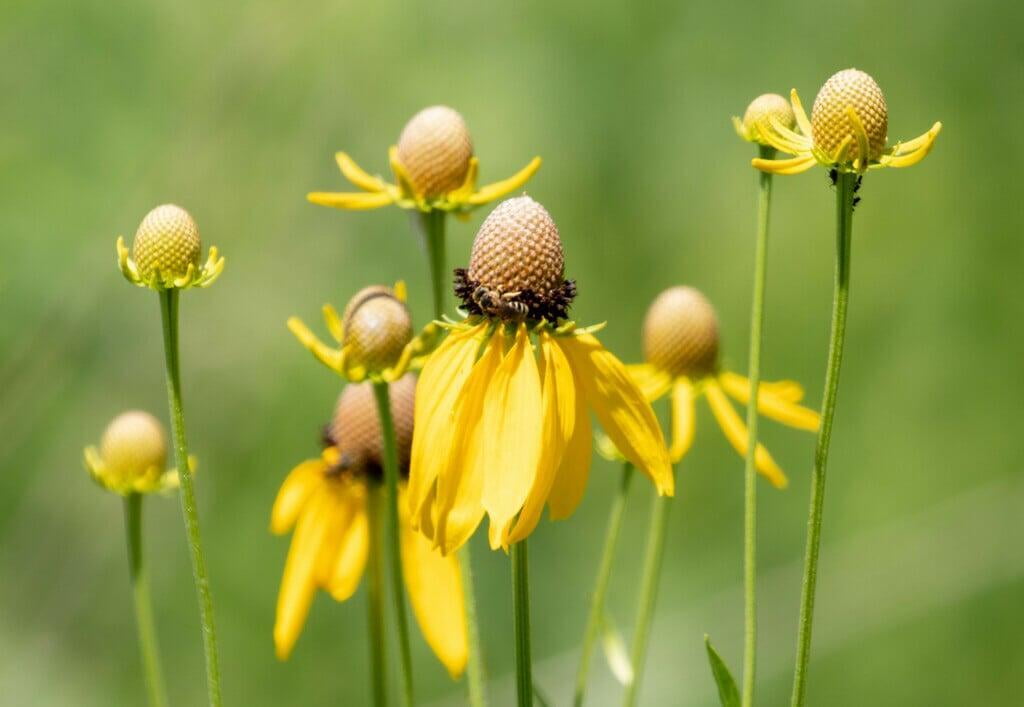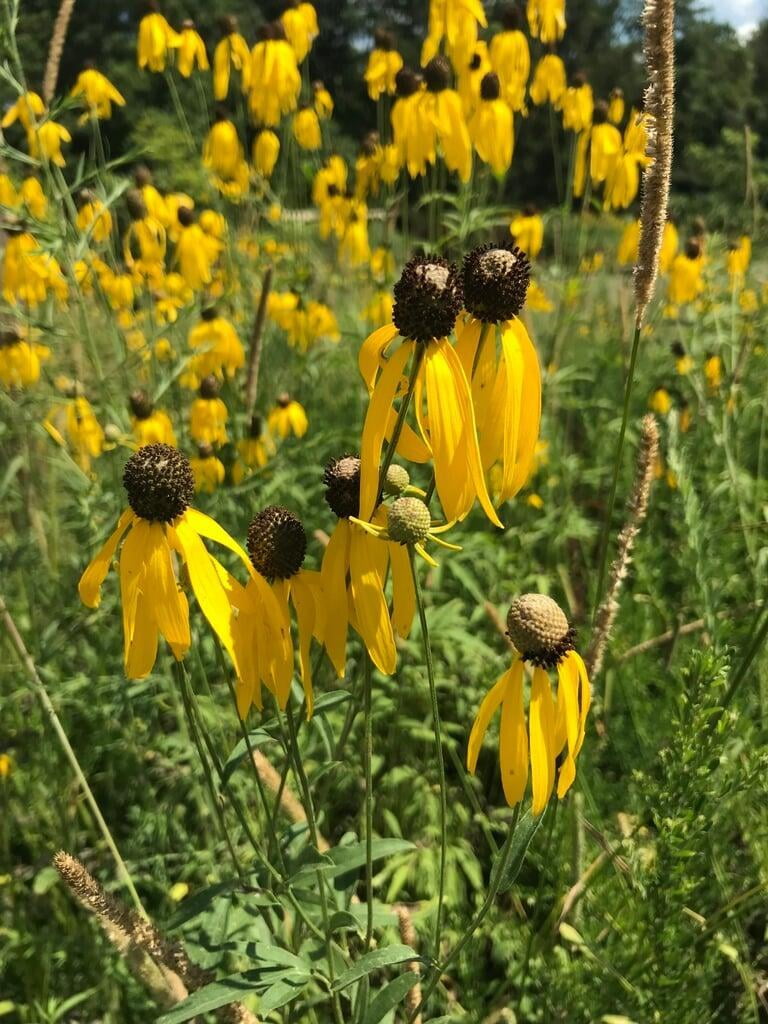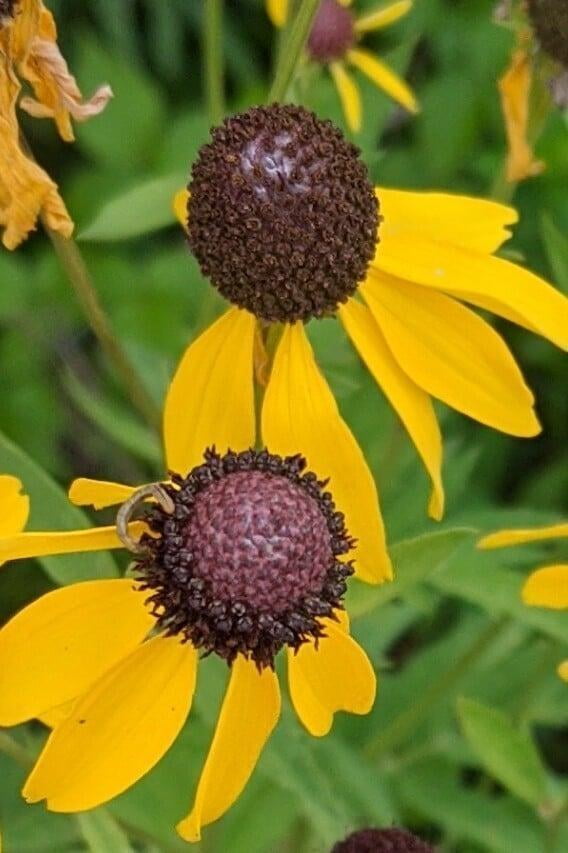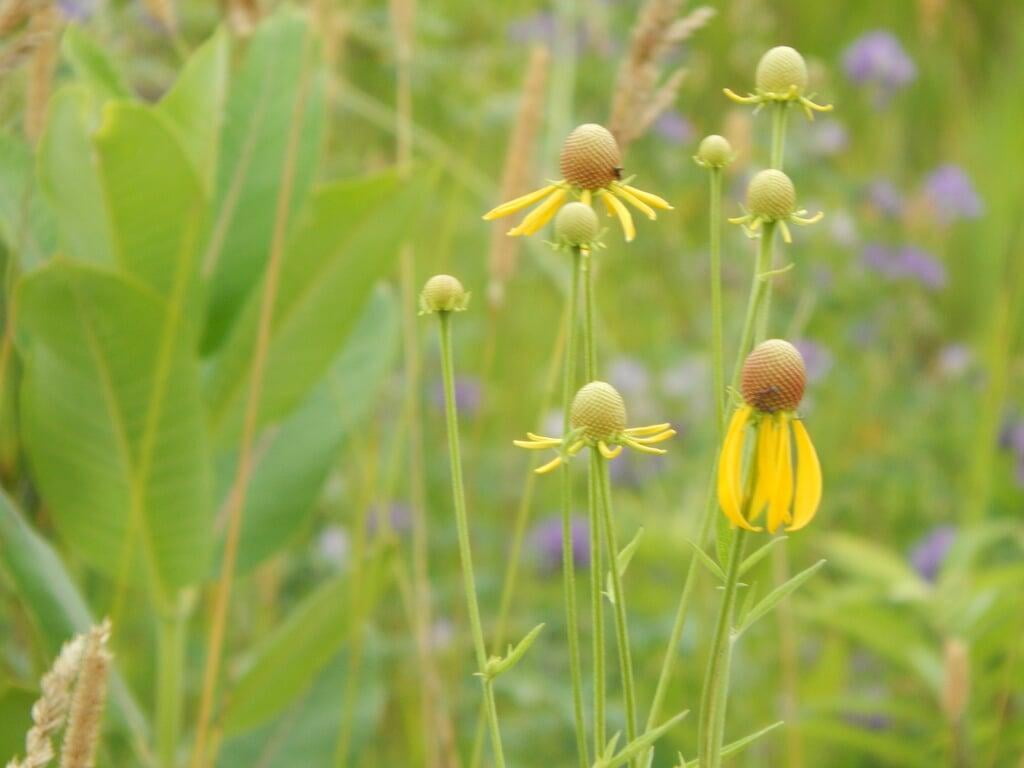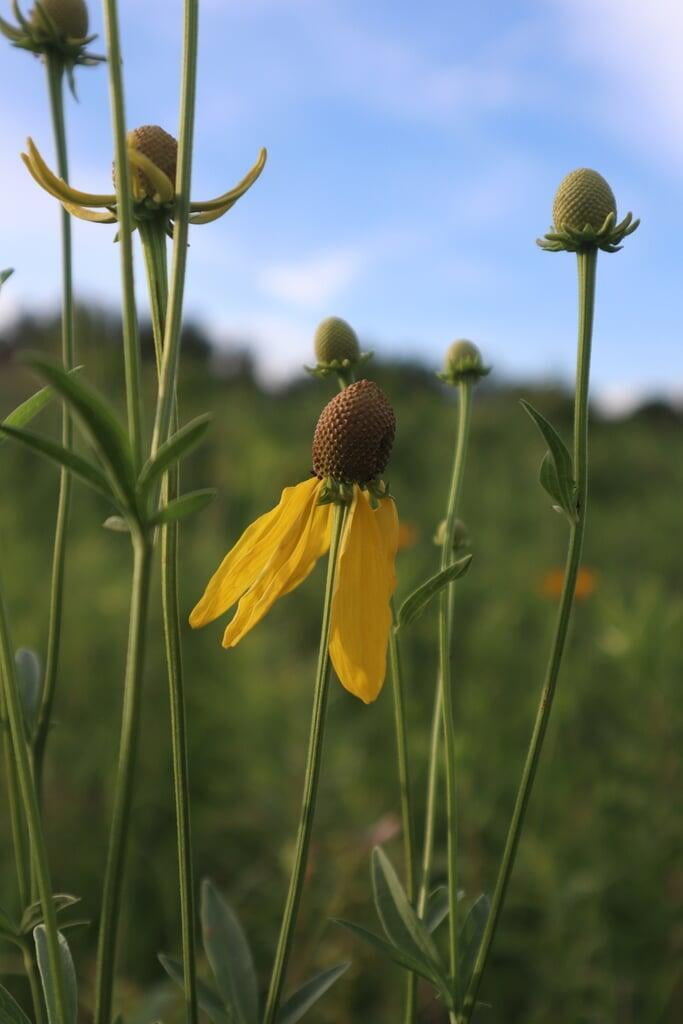Ratibida pinnata
Yellow coneflower Description:
Ratibida pinnata, commonly known as Grey-Headed Coneflower or Yellow Coneflower, is a herbaceous perennial plant native to North America. It is often found growing in prairies, meadows, and along roadsides, and is known for its distinctive flowers. The plant produces large, showy flowers with yellow disk florets and yellow ray florets that are arranged in daisy-like heads. The flowers are surrounded by leafy bracts that add to the plant's ornamental value. The foliage of Ratibida pinnata is pinnate with lobed leaflets, and the stem leaves are lanceolate and less divided. The plant has a taproot and is drought-tolerant, making it well-adapted to dry habitats.
In the wild, Ratibida pinnata provides food for a variety of pollinators, including bees, butterflies, and beetles. The flowers are especially attractive to bees, which collect nectar and pollen from the plant. In addition to its ecological value, Ratibida pinnata is also of interest to gardeners, who appreciate its showy flowers and drought tolerance. The plant is easy to grow and can be used in a variety of garden settings, from wildflower meadows to more formal gardens. Overall, Ratibida pinnata is a versatile and attractive plant that deserves recognition and appreciation.
Native Range:
Yellow coneflower is found in the central and Eastern United States.
Standard Plant Information:
Plant Height: 3' - 7'
Bloom Time: June - August
Preferred Habitat: Does well in sun and is often found in fields, prairies, and along roads.
Sowing:
For most homeowners, the best option is to scatter seed on the ground by hand broadcasting at a minimum of 16-64 pls ounces per acre. For even coverage, we recommend that you broadcast seed in perpendicular rows across the site to ensure even coverage.
You’ll want to broadcast any grass seed first, which will get raked into the soil lightly. Next, it is ideal to mulch the area lightly with either a clean (no seed) straw or preferably with our native Little Bluestem straw, sold at our retail garden centers. After a light mulching is complete, now it’s time to broadcast your native wildflower seeds, which should not be raked into the soil. A good rain or watering is sufficient to cover the seed.
Planting:
Simply dig a hole in the soil slightly larger than the plant’s roots. Ensure that the soil line of the plant is maintained during the transfer (i.e. the plant should be at the same level with the ground as it was in the pot). Pack any loose dirt back around the plant and make sure you water it well the same day to ensure it has the best chance of survival.



maps used with permission from MN Wildflowers
Ratibida pinnata Gallery
Ratibida pinnata Gallery
